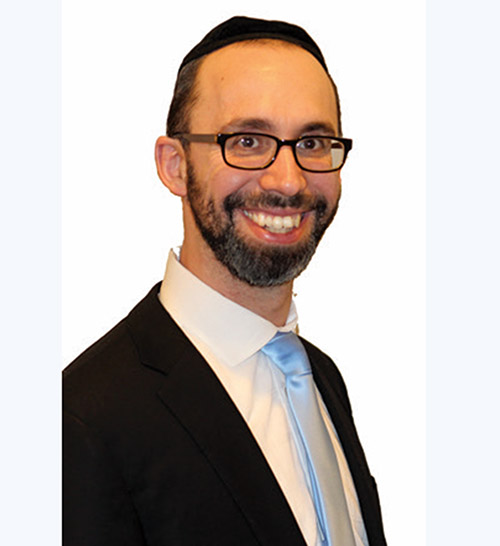
When Hashem told Moshe to collect a machatzit hashekel (a certain coin) from every Jew over the age of 20, He commanded: “Zeh yitnu”—This is what they should give.” Citing the Midrash Tanchuma, Rashi indicates that whenever the Torah says “Zeh—this” it is specifying an area of complexity that can only be understood after viewing an actual picture. When Hashem commanded Moshe to make the Menorah, “V’zeh maaseh haMenorah” (Behalotecha 8:4), He showed Moshe a fiery image of the Menorah since Moshe had difficulty envisioning how to fashion it out of one lump of gold. In the case of Kidush Hachodesh (sanctifying the new moon), “Hachodesh ha-zeh” (Bo 12:2), Moshe needed to be shown the exact size of the moon that could be consecrated. Similarly, in our case, Moshe had difficulty envisioning the machatzit hashekel, so Hashem showed him a fiery coin.
This Midrash is extremely perplexing. Those other issues were very complex and needed illustration, but what was difficult about understanding what a coin looked like? Even more troubling is that the coin needed to be a certain weight of silver; how does an image help in comprehending the weight of an item?
Rashi quotes the Midrash that these coins were to be melted down and formed into the adonim, the foundation and support for the walls of the Mishkan. The Netivot, Rav Yaakov from Lissa (1760-1832), zt”l, explains that Moshe’s difficulty was not in envisioning the machatzit hashekel, but rather that a mere coin could be used to help create a place for the presence of Hashem to dwell. How could money help create a resting place for Hashem?!
In reply, Hashem showed Moshe a fiery coin. It was the fire of the coin that was going to support the Mishkan. The fire represented the hitlahavut (passion) of the people in their donation.
Additionally, when we examine the exact wording of the Midrash, it says “Hashem took a fiery coin from underneath His Throne of Glory” to show Moshe. Why do we need to know that the coin came “from underneath His Throne of Glory”? Furthermore, the pasuk says the machatzit hashekel was to be “lechaper al nafshoteichem—an atonement for your souls” (Ki Tisa 30:15): how can a simple coin be used to atone for a life?!
In our daily recitations of the Shema, we say, “You shall love Hashem E-lokecha with all your heart, with all your soul and with all your wealth” (Devarim 6:5). It appears that the obligation to serve Hashem with all our wealth is on the same footing as serving Hashem with all our heart and soul (life).
It’s not always an easy decision for a person to forfeit his money instead of his life. Think of all the people who choose to live in places of immense physical danger, both in the United States and abroad, because they have businesses and careers there that they simply cannot give up. They rationalize: “I spent my life building this business (or career)! How will I live and support my family without it?” A person’s money is the vehicle Hashem gives him to continue his existence. Chazal state that “a poor man is considered as dead” and now we know why: money is interwoven with the very life of man.
Now we have a deep insight into the dialogue between Moshe Rabbeinu and Hashem. Moshe viewed the coin as “mere money.” How can a donation of a coin be the foundation for the Mishkan to create the dwelling place for the presence of Hashem?! Hashem then showed Moshe a fiery coin hewn from underneath the Throne of Glory. There is a Chazal that says that our souls are hewn from underneath the Throne of Glory. Hashem was thus telling Moshe to look where the money was coming from. A person’s money and soul are carved from the same lofty place. Giving up one’s own money is akin to giving up one’s life. When klal Yisrael donate the machatzit hashekel with passion, they are giving a piece of their soul.
The donation created the adonim, the very foundation for the Mishkan. All the Jews donated the machatzit hashekel equally, with their hearts, souls and money poured into the coins. When the coins were melted down, there could be no better foundation for Hashem’s Divine Presence in the world than one built upon those coins!
The Ohr Hachaim Hakadosh says that the donation of the machatzit hashekel reconnected Bnei Yisrael with Hashem. Whenever we give tzedakah we are giving part of ourselves to the cause, thereby connecting ourselves to that cause and to Hashem.
By Rabbi Baruch Bodenheim
Rabbi Baruch Bodenheim is the associate rosh yeshiva of Passaic Torah Institute (PTI)/Yeshiva Ner Boruch. PTI has attracted people from all over northern New Jersey, including Teaneck, Bergenfield, Paramus, Rockaway and Fair Lawn. He initiated and continues to lead a full multi-level gemara learning program in the evenings, gives halacha and hashkafah shiurim on Shabbat and, more recently, has spread out beyond PTI to begin a weekly Beit Medrash program with in-depth chavruta learning in both Livingston and Springfield, New Jersey.











